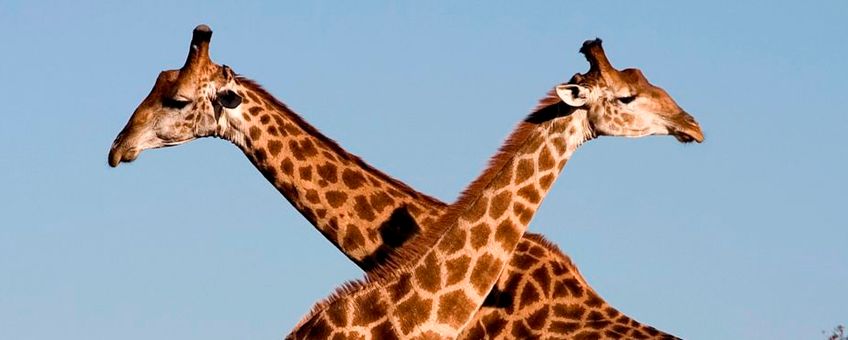
Mysterious skin disease make giraffes vulnerable to lions
Foundation for Sustainable DevelopmentMuch is still unknown on the Giraffe Skin Disease (GSD). The disease has been observed in Murchison Falls National Park in Uganda, Serengeti, Tarangire and Manyara National Parks in northern Tanzania, and Ruaha National Park in south-central Tanzania. A research on the ecology of carnivores and their prey is studying the spatial configuration of GSD, developing an abundance estimate. They also document the proportion of the population suffering from mild, moderate, and severe GSD of the Giraffe population in Ruaha National Park in Tanzania. This research will identify the number of giraffes affected by the disease, document its severity and determine if there are areas in the park where the disease is more common. This is important because it will help to collect important baseline data on GSD.
Prey for lions
The skin disease affects the legs of giraffes, causing lesions and sores that crack open, ooze and bleed. The sores are uncomfortable and may hinder their mobility. Normally, most adult giraffes are capable of fending off lions. However, the GSD makes them easier targets to lions. Across Africa, adult giraffe numbers are declining as the iconic animals are becoming an important prey species for lions. Despite being one of the most iconic and recognizable animals in the world, giraffe are probably the least researched large mammals in Africa.

The newly-formed IUCN Species Survival Commission (SSC) Giraffe & Okapi Specialist Group with support from the Giraffe Conservation Foundation (GCF) is currently conducting the first-ever detailed assessment of giraffe as a species as well as all its 9 subspecies and it is expected that by early 2016 most, if not all subspieces, will end up in one of the IUCN Red List threatened categories. This special exercise will provide important new information on the ecology, population and distribution of giraffes, shedding light on poorly understood behaviors such as the function of all-male giraffe herds and the leadership role taken by older females in the group. It also highlights how little we still know about these animals and calls for more research on and improved monitoring.

GSD and other accompanying anthropogenic threats to giraffe populations pose a threat to eventually wiping out the natural wild giraffe populations. Otherwise, the world will only be treated to the beauty of this iconic species in the confines of zoos and conservation centers. This reality presents a profound negative effect on the tourism industry of the African savanna game parks, conservation areas and countries as a whole. Results from both studies will be necessary to forecast the future of natural giraffe population and GSD management strategies in their natural home ranges.
Text: Faith Mutavi, Foundation for Sustainable Development
Photos: RECaP 2015 and Luca Galuzzi (Lucag) [CC BY-SA 2.5 (http://creativecommons.org/licenses/by-sa/2.5)], via Wikimedia Commons
Fun Fact: June 21st, is the longest day of the year, and for that reason, it is World Giraffe Day.
